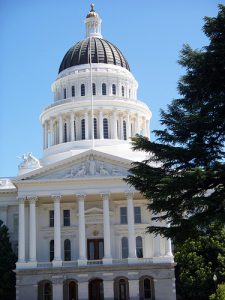
An article in the Sacramento Bee examines the role that nurses have in the political sphere in California, especially in terms of their ability to use strikes effectively. There have been a series of strikes or threatened strikes recently, such as this one on January 31st, 2012.
Rose Ann DeMoro is always ready for another fight.
And why not? During the past decade, the leader of the California Nurses Association has won so many of her battles.
Largely because of CNA efforts, California is poised to become the first state where registered nurses make an average salary above $100,000.
The union helped defeat gubernatorial candidate Meg Whitman in 2010 and has become a political force, throwing financial support behind candidates for offices ranging from Santa Rosa City Council to state attorney general.
And more recently, nurses flexed their muscles with a series of one-day walkouts in support of other hospital employees who are in tough contract negotiations.
“This is a significant career with responsibility for life and death,” DeMoro said. Hospitals, she said, “are looking to make more money off the backs of nurses. That’s not going to happen.”
The health care industry bristles at CNA tactics, including last Tuesday’s one-day nurse walkout at Kaiser Permanente hospitals alongside striking workers from the smaller National Union of Healthcare Workers. Hospital officials say the solidarity strikes put patients at risk.
“We don’t see how taking 23,000 nurses out of hospitals and having them walk the picket line advances quality patient care,” Jan Emerson-Shea, a vice president at the Sacramento-based California Hospital Association, said before a prior walkout in September.
“They’re putting access to care at over 30 hospitals at risk. In this economy, when is enough enough?”
Much of the union’s influence is due to a seeming contradiction: California has so many nurses, but not nearly enough.
About 240,000 registered nurses work in California, making it one of the most common professions among those with a college education. But Nevada is the only state with a lower rate of nurses per 1,000 residents, according to the federal Bureau of Labor Statistics.
Just to get to the national average, California would need to hire 80,000 nurses – 33 percent more than the state has now.
The shortage is expected to worsen, handing nurses more ability to dictate terms. Already struggling to meet demand, many higher education institutions that train nurses are losing funding. Meanwhile, baby boomers are getting older, requiring more health care services.
And then there’s health care reform, which “will increase demand for nursing,” said Ken Jacobs, chairman at the University of California, Berkeley Labor Center. “Health care will be the part of the economy that will grow. Nurses will have stronger bargaining power.”
